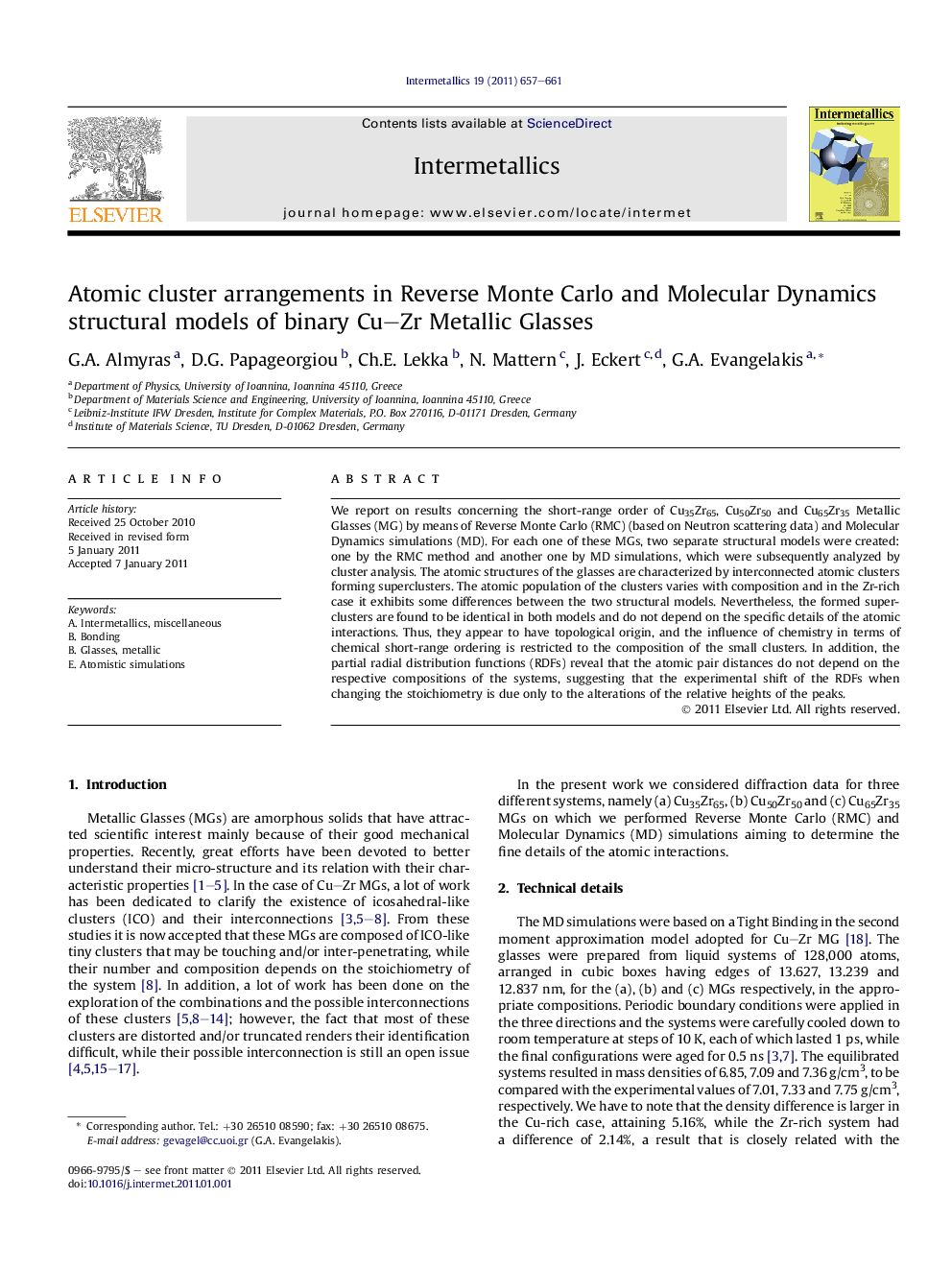| Article ID | Journal | Published Year | Pages | File Type |
|---|---|---|---|---|
| 1600688 | Intermetallics | 2011 | 5 Pages |
We report on results concerning the short-range order of Cu35Zr65, Cu50Zr50 and Cu65Zr35 Metallic Glasses (MG) by means of Reverse Monte Carlo (RMC) (based on Neutron scattering data) and Molecular Dynamics simulations (MD). For each one of these MGs, two separate structural models were created: one by the RMC method and another one by MD simulations, which were subsequently analyzed by cluster analysis. The atomic structures of the glasses are characterized by interconnected atomic clusters forming superclusters. The atomic population of the clusters varies with composition and in the Zr-rich case it exhibits some differences between the two structural models. Nevertheless, the formed superclusters are found to be identical in both models and do not depend on the specific details of the atomic interactions. Thus, they appear to have topological origin, and the influence of chemistry in terms of chemical short-range ordering is restricted to the composition of the small clusters. In addition, the partial radial distribution functions (RDFs) reveal that the atomic pair distances do not depend on the respective compositions of the systems, suggesting that the experimental shift of the RDFs when changing the stoichiometry is due only to the alterations of the relative heights of the peaks.
Graphical abstractFigure optionsDownload full-size imageDownload as PowerPoint slideResearch highlights► CuxZr(1-x) Metallic Glasses (MG) basic structural units correspond to Superclusters (SC). ► The SCs consist of inter-penetrating Icosahedral clusters of specific magic number sequences. ► Radial Distribution Functions (RDF) are reproduced from the averaged contributions of the SCs. ► The pair interactions locations are independent from the MG composition.
